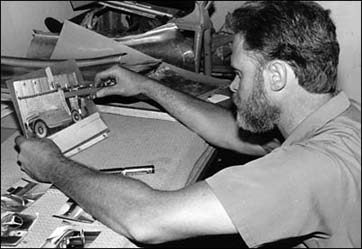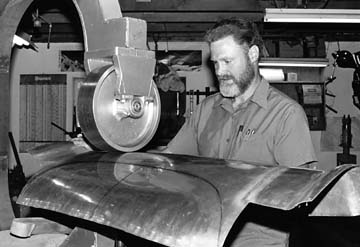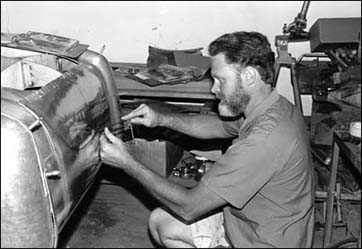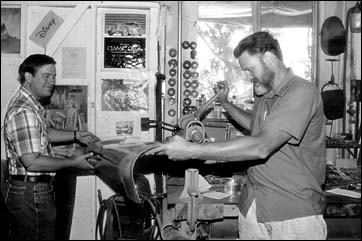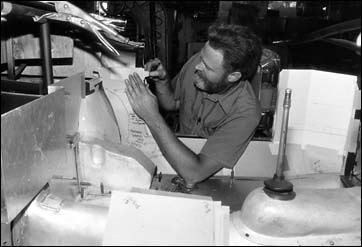Building a Complete, Accurate Ferrari Body Using 12 Photos
Building a Complete, Accurate Ferrari Body Using 12 Photos
(Note: Kent's intention with this article is to illustrate the overall process of doing a job like this. Even though there are digital methods of accomplishing much of this nowadays, the energy and detail required still remains the same. He hopes that you are inspired and educated by this large and complex project. This took two men two years, and cost $132,000 in 1990.)
In late 1951, the well-known Swedish ice racing champion, "Hooky" Sundberg, ordered a new racer from Ferrari with a special custom spyder body from Vignale.
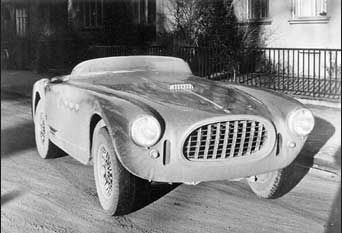
Upon taking delivery of his new car at the Ferrari factory in Modena, Italy, he drove it back to Sweden himself, over the midwinter sandy and muddy roads of northern Europe.
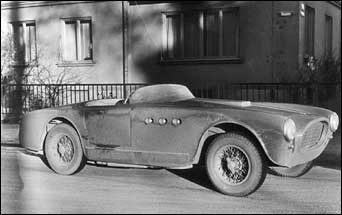
He raced the car only three times, during January and February of 1952, before the newly designed two-inch spikes mounted on the car's tires proved to be treacherous. During the third race, the spikes offered too much traction in a turn and the car overturned, crushing "Hooky" underneath and killing him.
With the car's body demolished and a chassis still very new, it was sent back to Vignale where a new coupe body was constructed (with a bench seat). The car was discovered four years ago, with a spyder racing history and a coupe body.
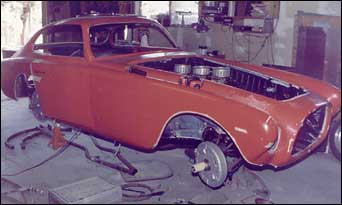
The new owner decided to have the original spyder body reconstructed from twelve photos and some press clippings.
The project was undertaken by The Tin Man, a company in Nevada City, California, well known for competition Ferrari restorations. The coupe body was first lifted in its entirety from the chassis.
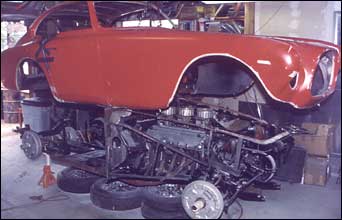
The photos were analyzed and measurements taken.
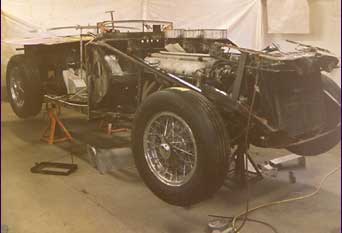
Point by point the framework for the body was developed using objects of known size in the photos, e.g., wheels and headlamps.
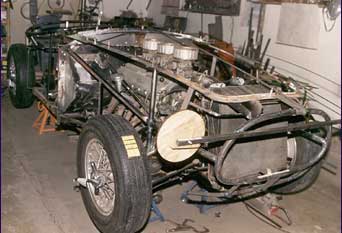
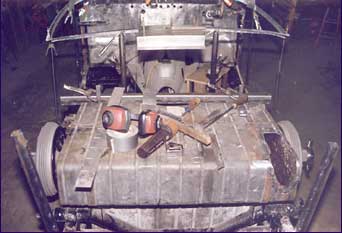 Rear section- Begin Mock-up
Rear section- Begin Mock-up
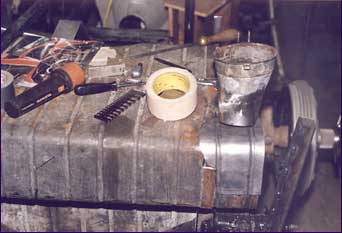 Move tank filler and patch side.
Move tank filler and patch side.
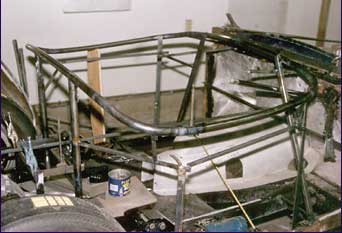 Mock-up cockpit and frame up the opening
Mock-up cockpit and frame up the opening
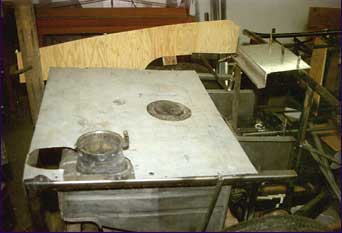 Mock-up trunk floor area
Mock-up trunk floor area
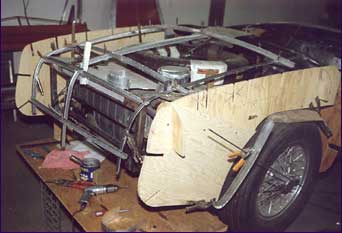 Mock-up body contours
Mock-up body contours
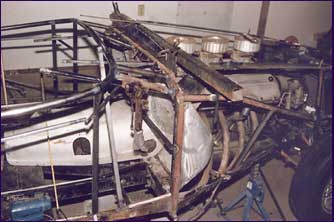 Mock-up cowl contours
Mock-up cowl contours
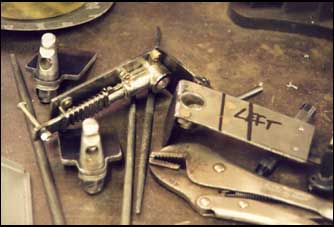 Rework door latches, hinges, and hood and lid parts
Rework door latches, hinges, and hood and lid parts
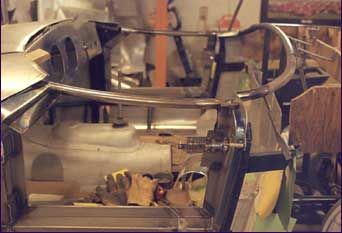 Build door frames
Build door frames 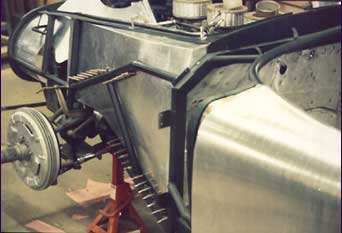 Build engine comp. side panels
Build engine comp. side panels
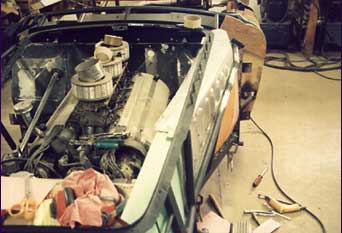 Louver side panels
Louver side panels 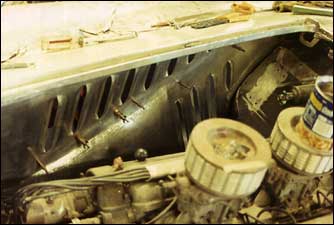 Finished engine comp. (body on)
Finished engine comp. (body on)
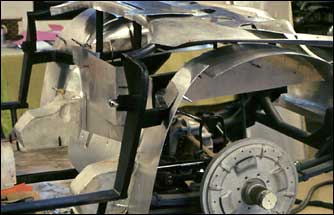 Work up interior panels, wheel houses, etc.
Work up interior panels, wheel houses, etc.
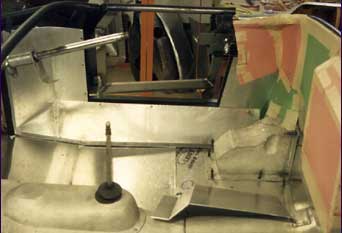 Mock-up cockpit, panels, then fab. them.
Mock-up cockpit, panels, then fab. them.
Patiently and carefully, checking each development in turn by eye and ruler, the slow process of three-dimensional development yielded first the under-structure and function, then the outer "skin" and appearance.
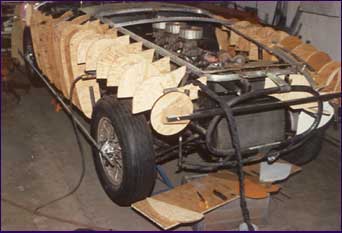
Many panels were first made, eyeballed, checked, changed, and then installed, only to be changed again when enough of the car appeared to show still another need for change.
All workmanship and forming techniques were done as close to original as possible to yield not just a replica or facsimile, but an exact copy of the real thing.
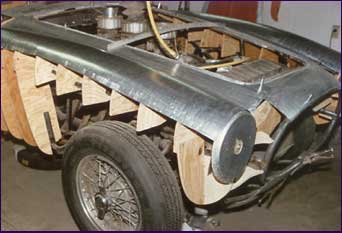
Finally, the last few contours were adjusted, trim pieces added, and the entire body was assembled.
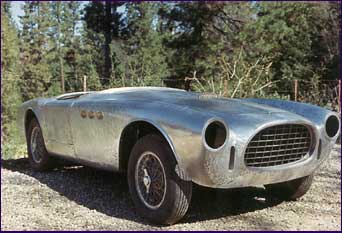
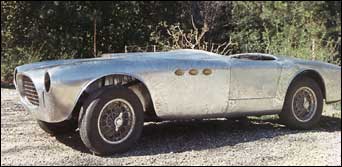 The 'new' Ferrari in Kent's back yard
The 'new' Ferrari in Kent's back yard
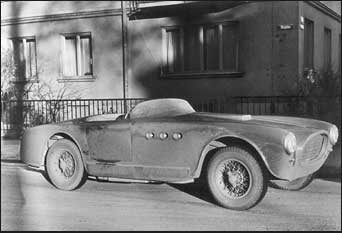 The original
The original
The only parts usable from the coupe were
- headlight assemblies
- hood hinges and latch
- door hinges and latches
- deck lid restraints
All body panels, frame assemblies, and trim items were constructed from the photos, and three other, different Vignale spyders. Each and every panel, screw, and rivet has been accounted for, as near as our research shows.
This car is both unique and rare, and very nice to have "back in the world".
Next destination: Photo studio, then complete mechanical restoration and paint. It will appear at Laguna Seca in '91, the Pebble Beach Concours, and then the Mille Miglia in '92.
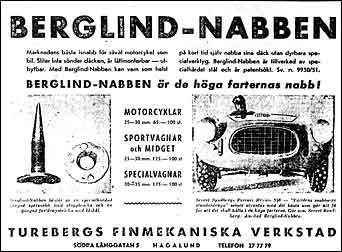 Note 2 inch spikes in the tires
Note 2 inch spikes in the tires
FORZA, Cavallino Rampante!
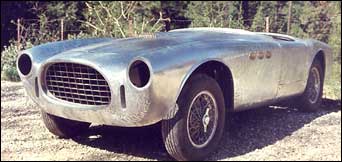
Watch as Kent recreates this 1952 Ferrari 4.1 America "Ice Racer"
